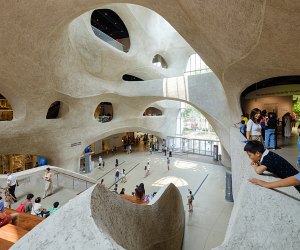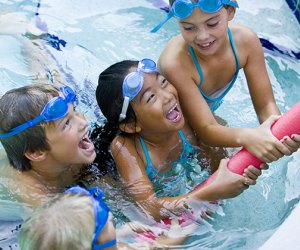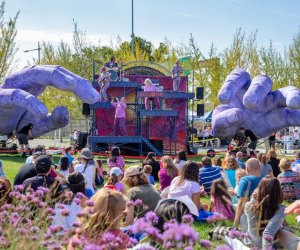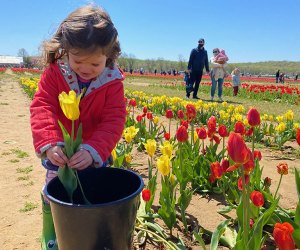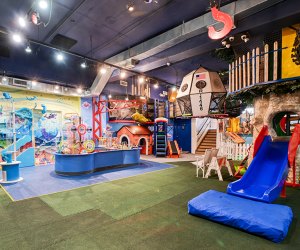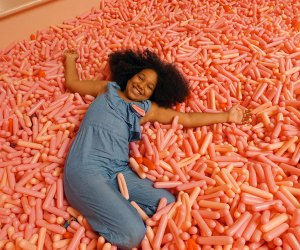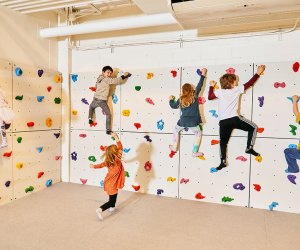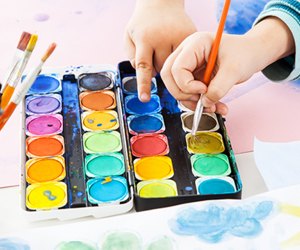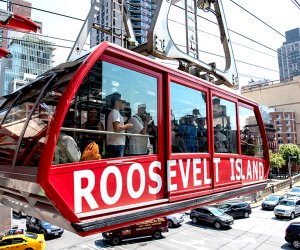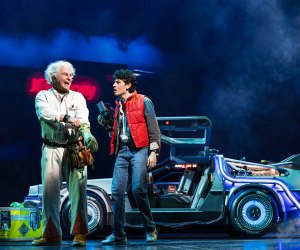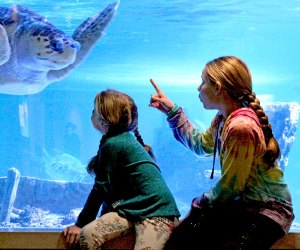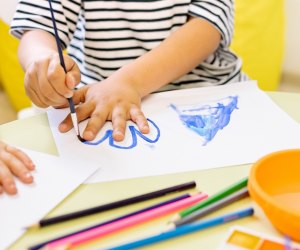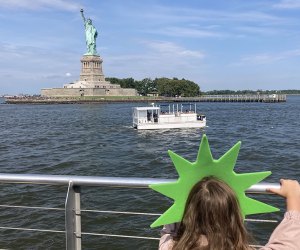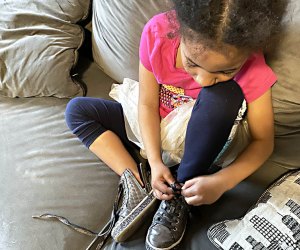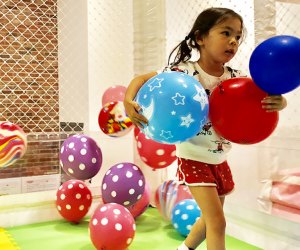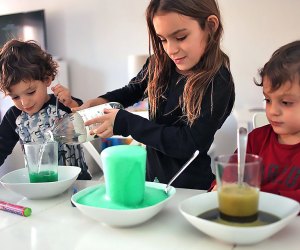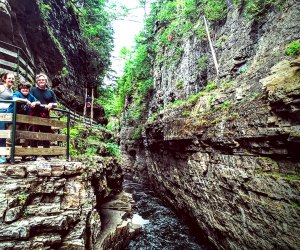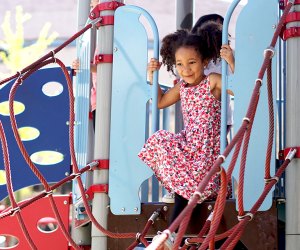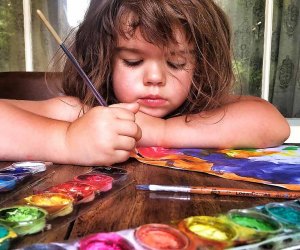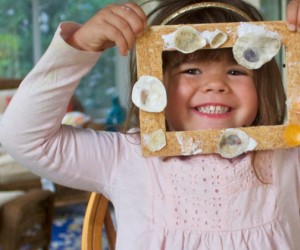15 Backyard Science Experiments for Messy Summer Fun
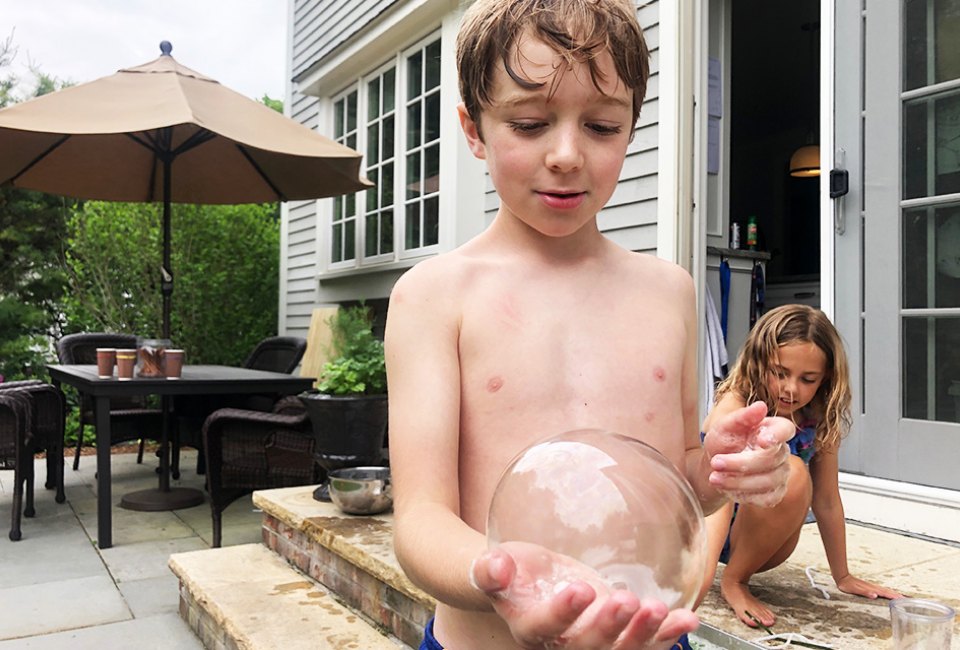
There are few parent-approved pastimes more loved than science experiments, but once summer hits, we naturally want kids (and their sticky creations) outdoors. With these 15 backyard science experiments for kids, all that measuring, mixing, and tinkering can take place on the grass, driveway, or a stretch of sidewalk.
Kids can learn to harness the power of sun or water in these science experiments, learning concepts ranging from molecular chemistry to basic physics. Several experiments are easy enough for even young children to do independently, but parents might want to get in on the (re)action, too! Find more science experiments for kids in our STEM Guide for Kids and loads more summer fun on our Ultimate Summer Bucket List Ideas with 100 (Mostly) Free Outdoor Games and Activities for Kids.
OUR LATEST VIDEOS
When the next rainy day hits, families might revisit our big list of science experiments to do at home. In the meantime, gather up some simple household materials and set to work making bouncy bubbles, sandbox volcanos, fizzy chalk fireworks, and water balloon parachutes. Happy experimenting!
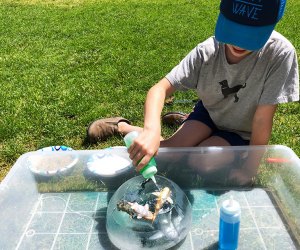
Kids will have a blast exploring the different ways to melt ice as they rescue ocean animals.
1. Frozen Ocean Rescue
Sea creatures are counting on your kid! Freeze a handful of toy marine animals (or any other small figurines) in a bowl of distilled water for a frozen ocean rescue. Set kids outside with the ice block, one or two different types of salt, some warm water (dyed blue or green makes for some spectacular colors), and some safe tools to see if they can warm the ice enough to rescue the trapped creatures.
Materials needed: Medium-sized bowl, distilled or boiled water, four or more small toys (marine animals are great, but action figures or Lego minifigures work well, too), table salt and/or ice cream salt, squeeze bottles or cups filled with warm water, and blue and/or green food dye (optional)
RELATED: Fun Science Experiments: Make a Lava Lamp with Kids
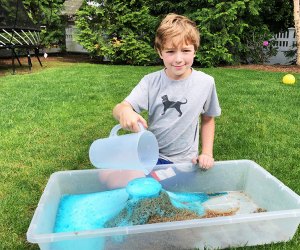
Take science outdoors and build a sandbox volcano in this classic science experiment.
2. Sandbox Volcano
Volcano science experiments for kids are always a crowdpleaser, but eruptions can be even bigger and better when you make a sandbox volcano. Kids should build a mound of sand around a right-side-up cup or jar, and then add a cup of baking soda mixed with a few drops of food dye into the open cup or jar. Slowly pour in vinegar to let the "lava" flow.
Materials needed: A sandbox or bag of sand in a large shallow plastic bin, large cup or jar, baking soda, household vinegar, and food coloring
3. Solar Oven S'Mores
This science experiment requires time and parent help, but the payoff is delicious! On a sunny and warm day, line a pizza box according to the dimensions outlined in this "recipe" for solar oven s'mores. Use a stick or long wooden skewer to prop open the box, place stacks of graham crackers, marshmallows, and chocolate inside, and wait a couple of hours for your s'mores to cook.
Materials needed: Pizza box, black paper, plastic wrap, aluminum foil, a stick, s'mores ingredients (graham crackers, chocolate bars, and marshmallows)
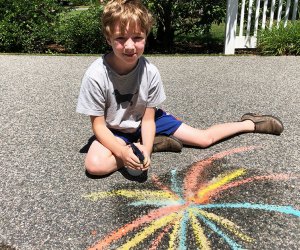
Make kid-friendly fireworks that fizz and pop.
4. Fizzy Chalk Fireworks
Kids can celebrate July 4th by painting their own fizzy chalk fireworks on the driveway, sidewalk, or street. Mixing baking soda, cornstarch, water, and food coloring creates liquid chalk that can be painted onto surfaces (smooth ones are best). Arm children with a spray bottle or squeeze bottle of vinegar to douse the fireworks, observing the bubbly reaction between an acid and a base.
Materials needed: Baking soda, cornstarch, food dye, household vinegar, paintbrushes, and a spray bottle or squeeze bottle
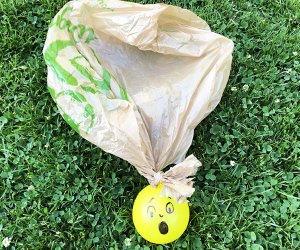
This fun activity is full of potential for scientific discoveries.
5. Water Balloon Parachutes
How can a water balloon survive a big drop? Strap a 'chute on it, of course! To make a water balloon parachute in this kid-friendly science experiment, kids snip the handles of a plastic disposable shopping bag and knot all four remaining tabs around the neck of a water balloon. Have them toss up a balloon without a parachute first (splat), and then a balloon with a parachute, discussing how air resistance works against gravity.
Materials needed: Small water balloons and thin plastic supermarket bags with handles
6. Exploding Watermelon
How exciting is the prospect of an exploding watermelon? Using lots (and lots) of rubber bands and patience, kids can cause a watermelon to explode (implode, more precisely), due to the forces of internal and external pressure—and voilá, we give you one of the messiest science experiments for kids that we could come up with for this summer!
Materials needed: Watermelon, 400-600 rubber bands, a bowl (to steady the melon), safety goggles, and apron
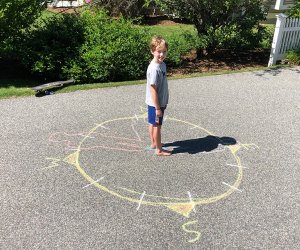
Experiment with shadows and timekeeping by making a human sundial.
7. Human Sundial
On the next extra sunny day, show kids how shadows tell time with a human sundial, one of the most hands-on science experiments for kids. Draw a chalk circle in a spot that receives sun all day. Mark cardinal directions around the edge. Have a child stand in the middle around 9am, around noon, around 3pm, and around 6pm. Trace the outline of their shadows and record the time in chalk. Discuss why the shadow has moved and gotten shorter or longer over the course of the day.
Materials needed: Chalk and compass
8. Water Pump Sprinkler
By pushing a skewer through the center of a straw and bending and taping the sides of the straw into a triangle, kids can make their own water pump sprinkler. Spinning the sprinkler rapidly inside a cup full of water will teach kids how centrifugal force pushes the water out of the cup (and hopefully cools off sunbaked little feet!).
Materials needed: Plastic cup, flexible plastic straws (non-bendy ones work best), wooden skewers, and masking or painter's tape
RELATED: Science Experiment for Kids: Make Soap Silly Putty
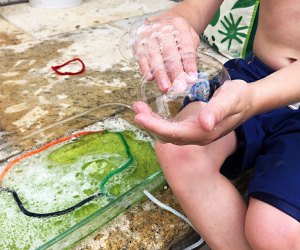
This bubble recipe makes bubbles strong enough that kids can catch or bounce.
9. Bouncy Bubbles
Bubbles are fun on their own, but mixing in corn syrup or glycerin (or both) and leaving the solution to "rest" for a couple hours makes for super-fun bouncy bubbles that resist popping.
Materials needed: Dish soap (Dawn or Joy work best), corn syrup or glycerin, homemade bubble wands (twisted pipe cleaners work great, but so do straws or twisted coat hangers)
10. Worm Tower
Yes, they may be gross, but nightcrawler worms can be fascinating to observe. Kids can make a live worm tower by layering sand and dirt in a clear jar filled with nightcrawlers. Temporarily covering the jar with black paper will encourage the worms to create tunnels that can be seen through the clear glass or plastic, offering kids a firsthand look at this classic biology-based science experiment.
Materials needed: Clear vase or jar, dirt, sand, black paper, and nightcrawlers (dug up from yard or purchased at a bait store)
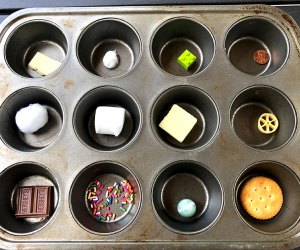
Grab a muffin tin and fill it with an assortment of objects. Discover which will melt in the sun.
11. What Melts?
Kids, especially little ones, will love to make predictions in this "What Melts?" experiment. On a very sunny and warm day, fill a muffin tin with a variety of solid objects, some of which will melt in the sun and some that won't. Have kids write down their guesses about which objects will melt and which will melt the fastest. Record the results. Making predictions or hypotheses is a classic first step for budding scientists.
Materials needed: Muffin tin, a variety of non-melting and melting solid objects (like a cube of ice, pat of butter, crayon, Lego brick, marble, and so on)
12. Egg Drop
This classic science class experiment can make for a constructive, productive, and exciting afternoon. Give kids an egg, and depending on their age, give them (or have them round up) a variety of soft or protective materials to secure around it with duct tape or rubber bands. Position them on a ladder or second-story window for the egg drop experiment. Discover what breaks and what doesn't (and why).
Materials needed: Eggs, a variety of soft or protective materials (like blankets or towels, foam, straws, a shoebox, etc.), duct tape, and rubber bands
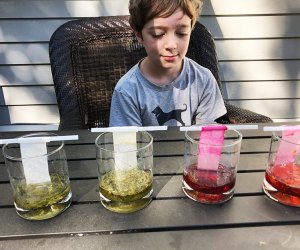
This leaf chromatography experiment reveals hidden colors in green leaves and lets you predict their fall colors.
13. Leaf Chromatography
By draping coffee filter strips in a glass filled with crushed leaves and rubbing alcohol overnight, kids can do their own leaf chromatography experiment. The "hidden colors" in a leaf will creep up the paper strips.
Materials needed: Clear glasses or jars, three to five different leaves (try for at least one non-green one, such as a red or Japanese maple), rubbing alcohol, one-inch strips of large, white "basket-style" coffee filters, straws, and tape
14. Leaf Transpiration
The simple act of securely tying a thin, clear plastic bag around a living tree branch can teach kids about leaf transpiration—how leaves release water into the air. This works best on a hot, dry day and with a well-watered tree.
Materials needed: Low, leaf-filled branch (intact on a tree), plastic bag (a poultry cooking bag or dry cleaning work well), twisty-tie or string, and a small rock
15. Hose Rainbows
Even sunny days can produce rainbows—if you have a hose! Spray a fine stream of water at different angles into the air to try to figure out how to catch a hose rainbow. Discuss how (and why) water refracts light into different colors.
Materials needed: Hose with a nozzle that produces a fine mist setting
Photos by the author





